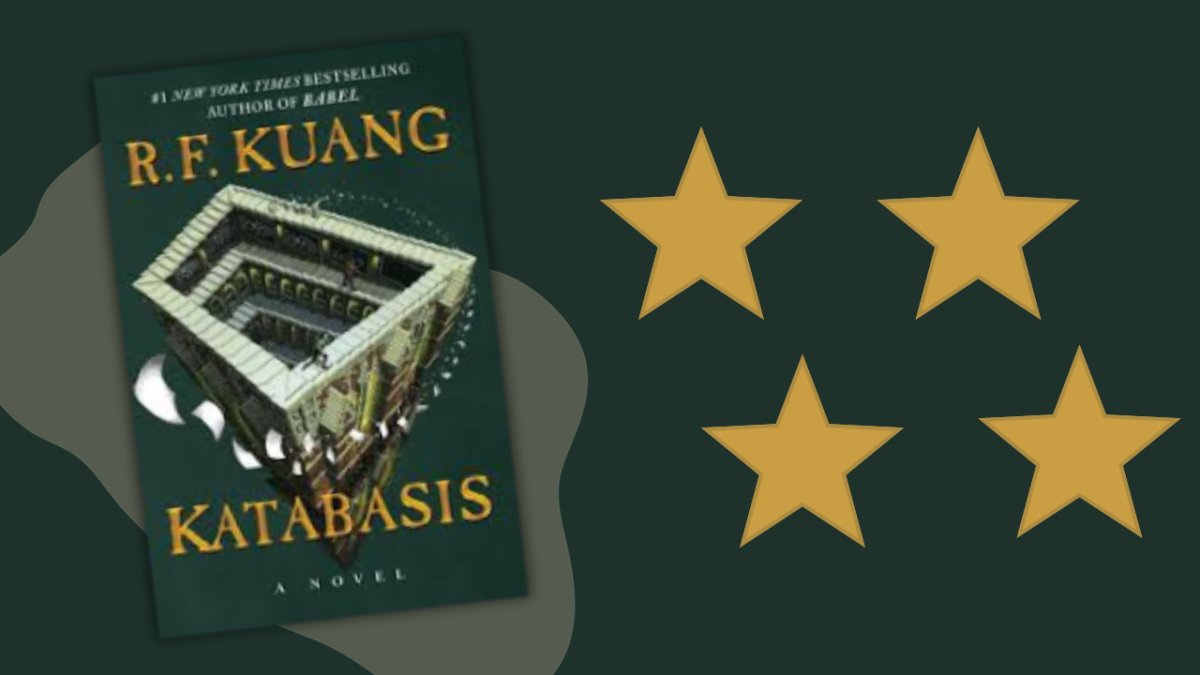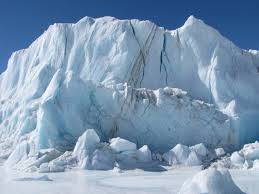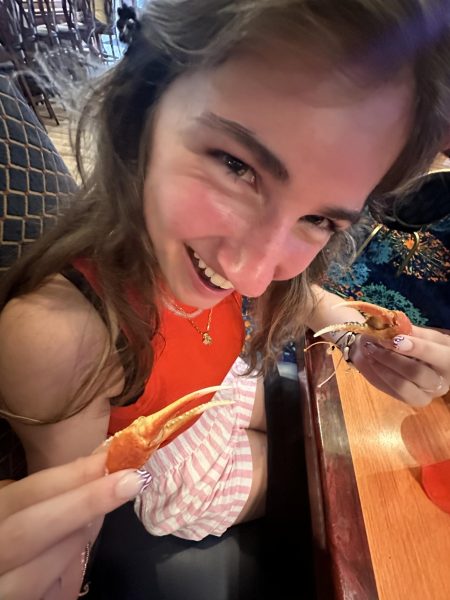In late January 2025, an iceberg the size of Chicago broke off from the George VI Ice Shelf in the Antarctic Peninsula. This large break was unfortunately due to climate change. The glacier George VI has been slowly melting over the past few decades due to changing conditions in the climate. While it’s devastating that such a large part of the glacier finally crumbled, the 209 square miles it revealed, gave the world a whole new undiscovered ecosystem. Researchers immediately scrambled to the peninsula to start exploring the new seafloor that had opened up to them. Patricia Esquete, the co-chief scientist and researcher for Environmental and Marine Studies, stated that “we didn’t expect to find such a beautiful, thriving ecosystem… the communities we observed have been there for decades, maybe even hundreds of years” (earth.com). From sponges to giant sea spiders, the research team finally revealed the ecosystem to the public on April 1, 2025. Hundreds of species and environments were documented; some were to be expected, but others were a shock to find. Here are just a few of the unique creatures and plants found.
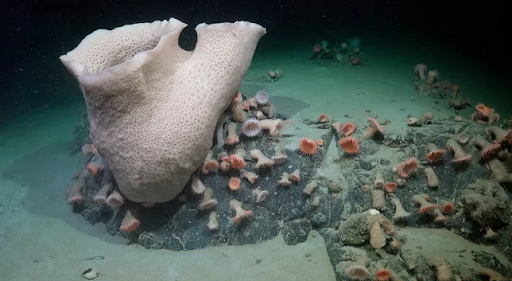 At 230 meters deep, large sponges were recorded. This is incredibly significant because sponges take decades to grow, only growing about two centimeters a year. Based on how large the sponges are, scientists are theorizing that this ecosystem has been around for centuries without our knowledge.
At 230 meters deep, large sponges were recorded. This is incredibly significant because sponges take decades to grow, only growing about two centimeters a year. Based on how large the sponges are, scientists are theorizing that this ecosystem has been around for centuries without our knowledge.
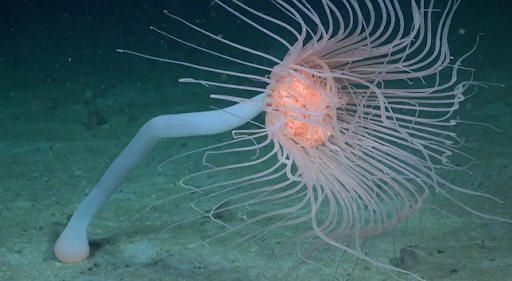 At 380 meters deep, a solitary hydroid was found. Often mistaken for being a plant, these are actually predators closely related to jellyfish. They have cells that sting unsuspecting prey in order to feed. Like the name implies, solitary hydroids differ because they don’t form complex colonies like traditional hydroids.
At 380 meters deep, a solitary hydroid was found. Often mistaken for being a plant, these are actually predators closely related to jellyfish. They have cells that sting unsuspecting prey in order to feed. Like the name implies, solitary hydroids differ because they don’t form complex colonies like traditional hydroids.
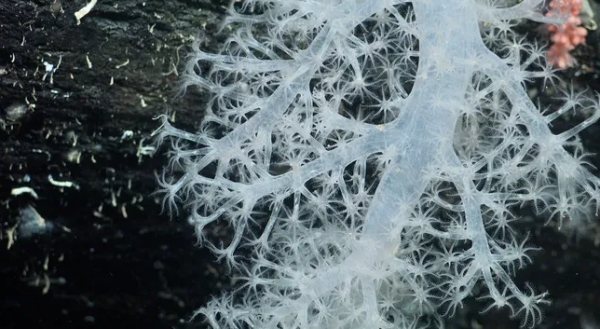 Around 1200 meters deep, a stalk of deep-sea coral was found. This species of coral is especially interesting because they don’t rely on photosynthesis due to the lack of sunlight in the deep sea. Instead, they feed on microorganisms that filter through the coral because of currents. Similar to the sponges found, deep-sea coral takes hundreds of years to grow, and some larger stalks can be traced back centuries.
Around 1200 meters deep, a stalk of deep-sea coral was found. This species of coral is especially interesting because they don’t rely on photosynthesis due to the lack of sunlight in the deep sea. Instead, they feed on microorganisms that filter through the coral because of currents. Similar to the sponges found, deep-sea coral takes hundreds of years to grow, and some larger stalks can be traced back centuries.
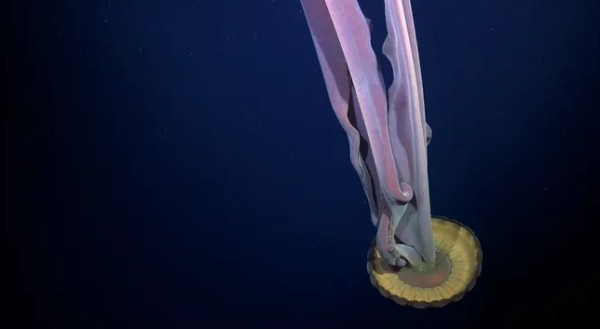 One of my personal favorite species that was documented is the giant phantom jellyfish. The giant in its name is no joke; the head of the jellyfish comes in at over a meter wide and its arms are more than 10 meters long. It’s also incredibly rare to see phantom jellyfish. They’ve only been spotted an estimated 120 times since their discovery in 1899.
One of my personal favorite species that was documented is the giant phantom jellyfish. The giant in its name is no joke; the head of the jellyfish comes in at over a meter wide and its arms are more than 10 meters long. It’s also incredibly rare to see phantom jellyfish. They’ve only been spotted an estimated 120 times since their discovery in 1899.
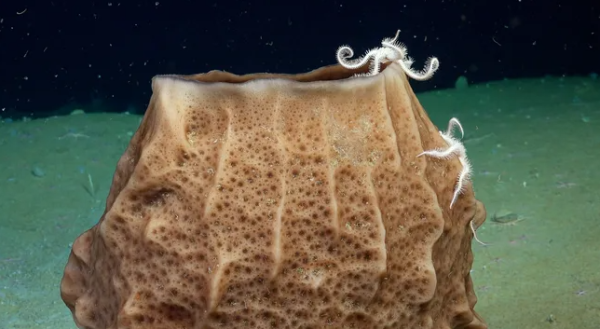 Brittle stars were found at 215 meters deep. Surprisingly, brittle stars are not starfish, but they are closely related to them. They have unique arms that are long and slender for better mobility in the deep sea.
Brittle stars were found at 215 meters deep. Surprisingly, brittle stars are not starfish, but they are closely related to them. They have unique arms that are long and slender for better mobility in the deep sea.
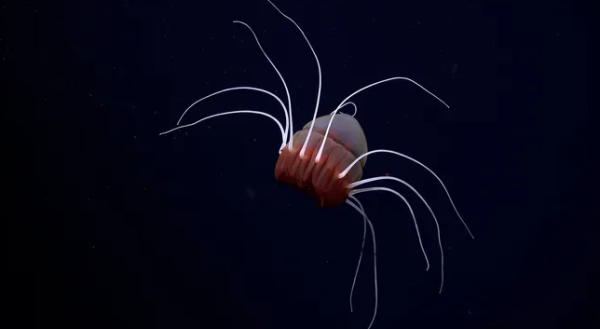 Another unique type of jellyfish was found in this flourishing ecosystem, the helmet jellyfish. They have a strange look to them, with a big bell shaped head and 12 stiff arms. Helmet jellyfish are also quite small, only being about 35 cm wide and 20 cm long.
Another unique type of jellyfish was found in this flourishing ecosystem, the helmet jellyfish. They have a strange look to them, with a big bell shaped head and 12 stiff arms. Helmet jellyfish are also quite small, only being about 35 cm wide and 20 cm long.
 Amazingly, the research team believes they found a new species of isopod. Known for their flat bodies and ability to roll for defense, isopods have a large number of diverse species. Esquete, the co-chief researcher that was mentioned previously, theorizes that there are hundreds of new species in this ecosystem yet to be discovered.
Amazingly, the research team believes they found a new species of isopod. Known for their flat bodies and ability to roll for defense, isopods have a large number of diverse species. Esquete, the co-chief researcher that was mentioned previously, theorizes that there are hundreds of new species in this ecosystem yet to be discovered.
Explorations like this are crucial to better our understanding of what the oceans have to offer us. This mission was also part of a larger project, Challenger 150. It’s a global effort to raise awareness of marine life and protect it the best they can. Spreading such hopeful information of entire ecosystems that have thrived for centuries is ground breaking, but it’s also important to remember how we discovered it. Through the harsh conditions ice sheets are experiencing because of climate change. But it gives researchers hope because so many species were able to adapt and survive through these conditions for centuries.
Works Cited
“Ecosystem Never Seen by Humans Discovered after Iceberg Breaks Away from Antarctica.” Earth.com, 2025, www.earth.com/news/new-ecosystem-sea-creatures-never-before-seen-revealed-antarctica-iceberg-breakup/. Accessed 4 Apr. 2025.
“Hydroid | Characteristics & Life Cycle.” Encyclopedia Britannica, www.britannica.com/animal/Hydrozoa.
“New Ecosystem Revealed after Antarctica Iceberg Breaks off Glacier.” USA TODAY, 2025, www.usatoday.com/picture-gallery/news/world/2025/04/03/antarctica-iceberg-glacier-ecosystem/82797210007/.
NOAA Fisheries. “Deep-Sea Coral Habitat | NOAA Fisheries.” Noaa.gov, 2019, www.fisheries.noaa.gov/national/habitat-conservation/deep-sea-coral-habitat.
Smith, Lydia. “Giant Phantom Jelly: The 33-Foot-Long Ocean Giant That Has Babies out of Its Mouth.” Livescience.com, Live Science, 25 Jan. 2025, www.livescience.com/animals/jellyfish/giant-phantom-jelly-the-33-foot-long-ocean-giant-that-has-babies-out-of-its-mouth.
Montereybayaquarium.org, 2022, www.montereybayaquarium.org/animals/animals-a-to-z/helmet-jelly.








